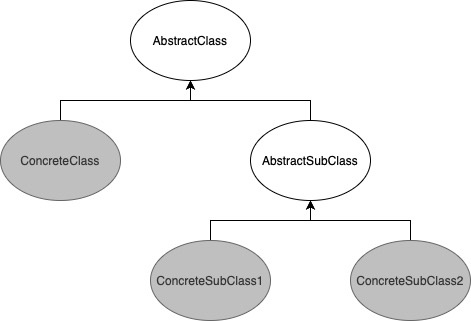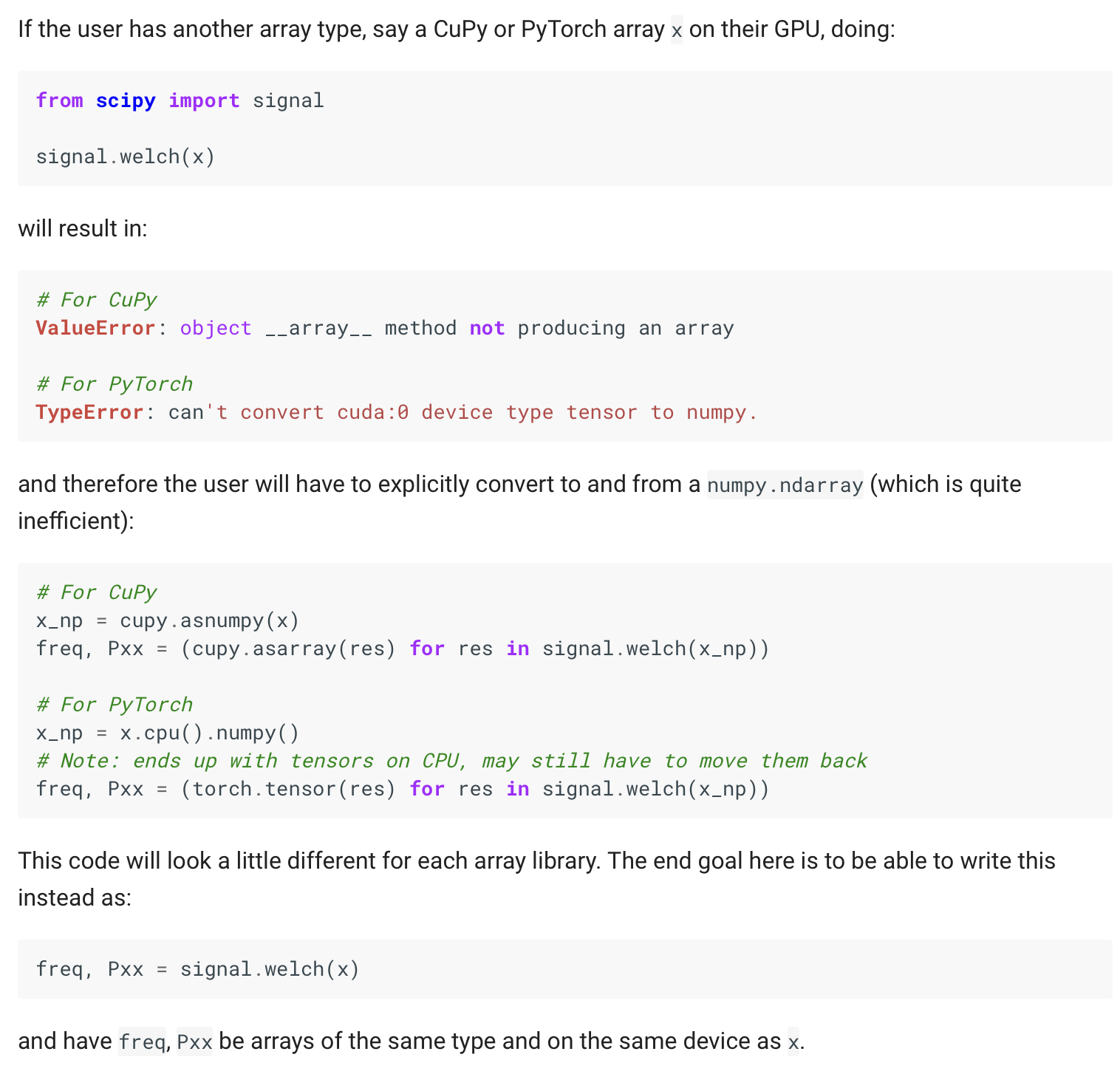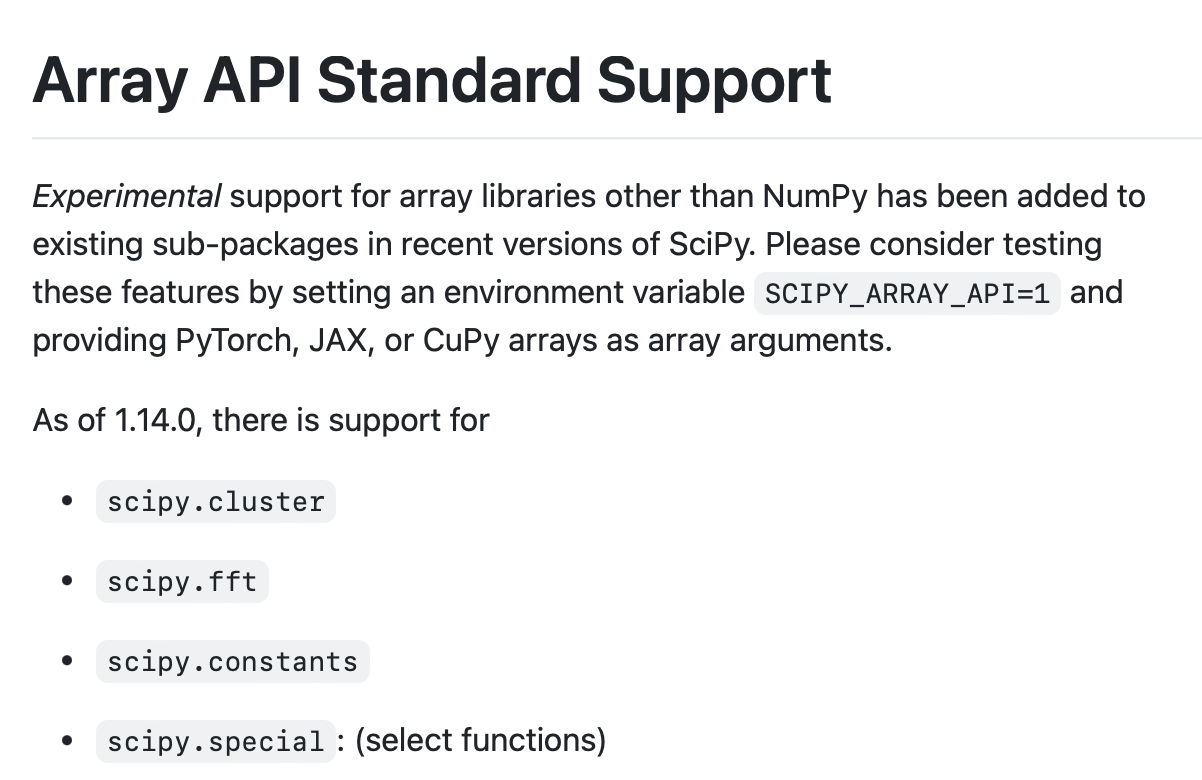New(er) Patterns in (Scientific) Python#
Author: Nathaniel Starkman (MIT, starkman@mit.edu)
This isn’t a tutorial on Python, but this is also a time of exciting change in the Python ecosystem and you might not be familiar with some (relatively) recent developments.
Setup#
If you have an isolated Python you’d like to work in that’s fine. If not, here’s how to set up a uv environment, install dependencies, and connect the environment to your Jupyter.
Install
uv@ https://docs.astral.sh/uv/#installationSet it up
uv sync
[ ]:
Type Annotations#
Type annotations provide information about your functions.
They are useful for:
Understanding a function
Static analysis of that function
Hooking into IDEs
Catching errors
compilation of your Python for speed! See mypyc, codon, nuitka
[1]:
def func(x: int) -> int:
return x + 1
Type annotations are now important in many places in Python. For example…
[ ]:
The Dataclass#
Source modified from https://docs.python.org/3/library/dataclasses.html
[2]:
from dataclasses import dataclass, KW_ONLY, field
import astropy.units as u
When should you use a dataclass? Pretty much any time you have a class that is defined by it’s attributes.
For example…
[3]:
@dataclass
class StarCluster:
"""Class for average properties of a star cluster."""
num_stars: int
radius: u.Quantity
velocity_dispersion: u.Quantity
age: u.Quantity
_: KW_ONLY
name: str | None = field(
default=None, # name is optional, default to None
compare=False, # don't use `name` in `__eq__` checks
hash=False # don't use `name` in hash calculations
)
@property
def number_density(self):
return self.num_stars / (4/3 * 3.14159 * self.radius**3)
Dataclass takes care of generating all the special methods: __init__, __repr__, __eq__, etc.
[4]:
StarCluster?
Init signature:
StarCluster(
num_stars: int,
radius: astropy.units.quantity.Quantity,
velocity_dispersion: astropy.units.quantity.Quantity,
age: astropy.units.quantity.Quantity,
*,
name: str | None = None,
) -> None
Docstring: Class for average properties of a star cluster.
Type: type
Subclasses:
[5]:
StarCluster.__repr__?
Signature: StarCluster.__repr__(self)
Docstring: Return repr(self).
File: Dynamically generated function. No source code available.
Type: function
[6]:
StarCluster.__eq__?
Signature: StarCluster.__eq__(self, other)
Docstring: Return self==value.
File: Dynamically generated function. No source code available.
Type: function
[7]:
pal5 = StarCluster(
num_stars=500,
radius=u.Quantity(100, "pc"),
velocity_dispersion=u.Quantity(5, "km/s"),
age=u.Quantity(12, "Gyr"), name="Palomar 5"
)
pal5
[7]:
StarCluster(num_stars=500, radius=<Quantity 100. pc>, velocity_dispersion=<Quantity 5. km / s>, age=<Quantity 12. Gyr>, name='Palomar 5')
[8]:
pal5.number_density
[8]:
[9]:
tuc47 = StarCluster(1000, u.Quantity(50, "pc"), u.Quantity(3, "km/s"), u.Quantity(10, "Gyr"), name="Tucana 47")
[10]:
tuc47 == pal5
[10]:
False
Besides convenience, dataclasses offer a few advantages:
Consistently structured. This means that tools can easily understand and manipulate dataclasses. We don’t need bespoke tooling.
Statically defined.
Easily introspected.
[11]:
from dataclasses import asdict, replace, fields
[12]:
fields(pal5)
[12]:
(Field(name='num_stars',type=<class 'int'>,default=<dataclasses._MISSING_TYPE object at 0x1015ccce0>,default_factory=<dataclasses._MISSING_TYPE object at 0x1015ccce0>,init=True,repr=True,hash=None,compare=True,metadata=mappingproxy({}),kw_only=False,_field_type=_FIELD),
Field(name='radius',type=<class 'astropy.units.quantity.Quantity'>,default=<dataclasses._MISSING_TYPE object at 0x1015ccce0>,default_factory=<dataclasses._MISSING_TYPE object at 0x1015ccce0>,init=True,repr=True,hash=None,compare=True,metadata=mappingproxy({}),kw_only=False,_field_type=_FIELD),
Field(name='velocity_dispersion',type=<class 'astropy.units.quantity.Quantity'>,default=<dataclasses._MISSING_TYPE object at 0x1015ccce0>,default_factory=<dataclasses._MISSING_TYPE object at 0x1015ccce0>,init=True,repr=True,hash=None,compare=True,metadata=mappingproxy({}),kw_only=False,_field_type=_FIELD),
Field(name='age',type=<class 'astropy.units.quantity.Quantity'>,default=<dataclasses._MISSING_TYPE object at 0x1015ccce0>,default_factory=<dataclasses._MISSING_TYPE object at 0x1015ccce0>,init=True,repr=True,hash=None,compare=True,metadata=mappingproxy({}),kw_only=False,_field_type=_FIELD),
Field(name='name',type=str | None,default=None,default_factory=<dataclasses._MISSING_TYPE object at 0x1015ccce0>,init=True,repr=True,hash=False,compare=False,metadata=mappingproxy({}),kw_only=True,_field_type=_FIELD))
[13]:
# With asdict, we can convert the dataclass to a dictionary!
asdict(pal5)
[13]:
{'num_stars': 500,
'radius': <Quantity 100. pc>,
'velocity_dispersion': <Quantity 5. km / s>,
'age': <Quantity 12. Gyr>,
'name': 'Palomar 5'}
[14]:
# With replace, we can create a new instance of the dataclass with ANY fields
# changed! Here, we change the number of stars to 100,000.
replace(pal5, num_stars=int(1e5))
[14]:
StarCluster(num_stars=100000, radius=<Quantity 100. pc>, velocity_dispersion=<Quantity 5. km / s>, age=<Quantity 12. Gyr>, name='Palomar 5')
[15]:
# Quick test of equality under replacement
pal5 == replace(pal5), pal5 == replace(pal5, num_stars=1_000)
[15]:
(True, False)
[ ]:
Abstract/Final Pattern#
Adapted from https://docs.kidger.site/equinox/
This is a pattern that is mandatory in Julia and has been emerging in popularity in the ML community in Python.
It produces VERY clean and readable code and has easy to understand class inheritances.
Every class must be either:
abstract (it can be subclassed, but not instantiated); or
final (it can be instantiated, but not subclassed).

[16]:
from abc import ABCMeta, abstractmethod
from typing import final
[17]:
# This class is abstract and cannot be instantiated
class AbstractClass(metaclass=ABCMeta):
"""Abstract base class."""
@abstractmethod
def method(self):
pass
[18]:
# This class is concrete and can be instantiated
@final
class ConcreteClass(AbstractClass):
"""A concrete subclass of AbstractClass."""
def method(self):
return "Beautiful is better than ugly."
[19]:
# This class is abstract and cannot be instantiated.
# But it's subclasses are concrete and can be instantiated.
class AbstractSubClass(AbstractClass):
"""An abstract subclass of AbstractClass."""
@abstractmethod
def another_method(self):
pass
@final
class ConcreteSubClass1(AbstractSubClass):
"""A concrete subclass of AbstractSubClass."""
def method(self):
return "Explicit is better than implicit."
def another_method(self):
return "Simple is better than complex."
@final
class ConcreteSubClass2(AbstractSubClass):
"""Another concrete subclass of AbstractSubClass."""
def method(self):
return "Complex is better than complicated."
def another_method(self):
return "Flat is better than nested."
[20]:
ConcreteSubClass1().another_method()
[20]:
'Simple is better than complex.'
[ ]:
Array API#
See https://data-apis.org/array-api/
There’s a lot to say about the Array API.
Here’s two:
It’s unifying the numerical Python API
It enables a lot of interoperability


Unifying the API does mean some function names are changing!
[21]:
import numpy as np
np.concat
[21]:
<function concatenate at 0x108007d70>
[ ]:
Recap#
Type Annotations
Dataclasses
Abstract / Final
Array API
[ ]: